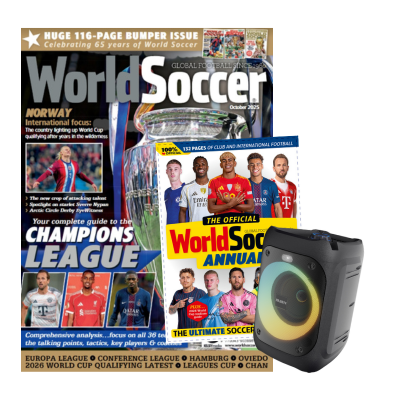Part two of Tim Vickery’s assessment of Brazil’s World Cup credentials. Part one can be found here.
Constant supply
As for their own corners and free-kicks, they are producing a constant supply of goals. Elano strikes with great precision, a phalanx of giant players attack the ball, and there are variations to worry the opposing defence at the near post, far post and in the middle. It was the set-pieces that took the recent game away from Argentina. Diego Maradona’s side started well in Rosario, and controlled the opening minutes. But once Luisao had headed home Elano’s free-kick there was only one winner. Another free-kick soon provided the second goal, and after the break as Argentina opened up Kaka and Luis Fabiano combined for the perfect counter-attack clincher.
So with a game plan based on counter-attacks and set-pieces, Dunga has hit on a style in which controlled possession is not always necessary. In the June trip to Uruguay, for example, the corner count was 15-2 in the opposition’s favour. But Brazil won 4-0.
“We’re showing that we’re on the right path,” said Dunga once qualification had been achieved. “Against Argentina came the confirmation.”
Perhaps here he should be careful with his words. His subsequent opponent, Chile coach Marcelo Bielsa, could tell him from experience that, short of crossing the line, there is no such thing as confirmation in World Cup qualifying.
Eight years ago, in charge of his native Argentina, Bielsa charged to a World Cup place in a manner every bit as convincing and impressive as Dunga’s Brazil. Bielsa’s team were justly included among the tournament favourites. Come 2002, though, everything went wrong. Argentina were eliminated in the first round, and history has judged the side more on their World Cup flop than their gallop to qualification.
Argentina’s 2002 team were so highly rated going into the competition because many saw them as an excellent blend of South American skill and European dynamism. Perhaps the label applies even better to Dunga’s men.
Brazil have a huge, imposing group of players with the look of a basketball team. The long-term aim of matching the Europeans in physical terms, given an impetus by the loss to Holland in 1974, has been achieved and then some. But in key attacking positions, extra strength has been attained at no cost to speed or skill – as some of their counter-attacking goals bear witness.
Up for grabs
Of course there are risks in their current approach. The left-back (the one position in the side that still looks up for grabs) lacks protection and Brazil had real recent problems coping with Chile right winger Alexis Sanchez. Inviting the opposition forward has forced a number of top-class displays from keeper Julio Cesar and centre-back Lucio – an off day for either could be bad news. And a lack of central-midfield passing elaboration can leave them looking laboured against opponents cute enough to block their favourite avenues.
But with qualification in the bag early, Dunga has the luxury of time to experiment with a Plan B. Diego was discarded after the Olympic campaign, but has made an impressive start with Juventus and could be worth a recall. Anderson’s progress at Manchester United will be followed closely. And Dunga has said that the door is still open for Ronaldinho if he can get back in shape.
Complacency would seem an improbable enemy. Unlike the 2006 squad, Dunga’s Brazil are not built around bohemian stars. The religious fervour of the two senior players, Lucio and Kaka, sets the tone for a Brazil of rigour and sobriety.
Come the draw in December they will not be the only ones praying. Lots of other sides, however, will be hoping that they are not placed in the same group as Dunga’s Brazil.
Part one of Tim Vickery’s piece can be found here.






